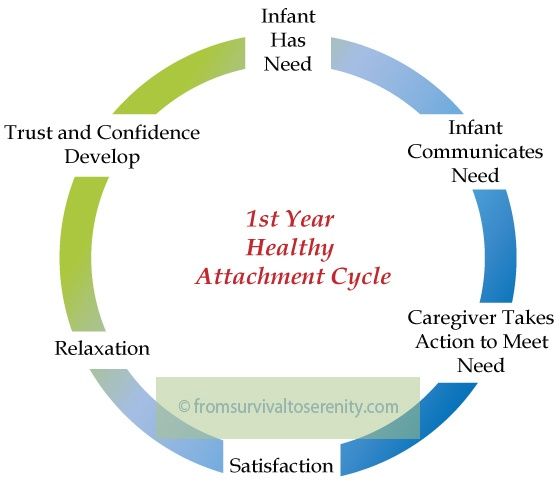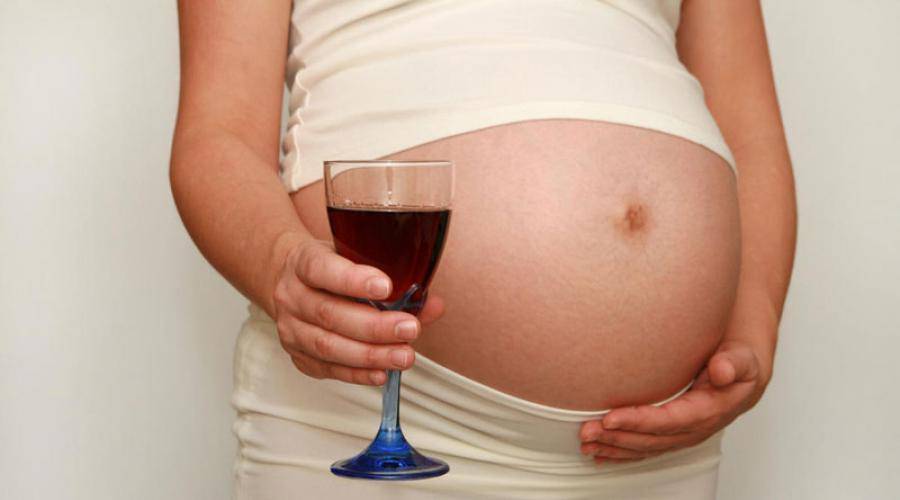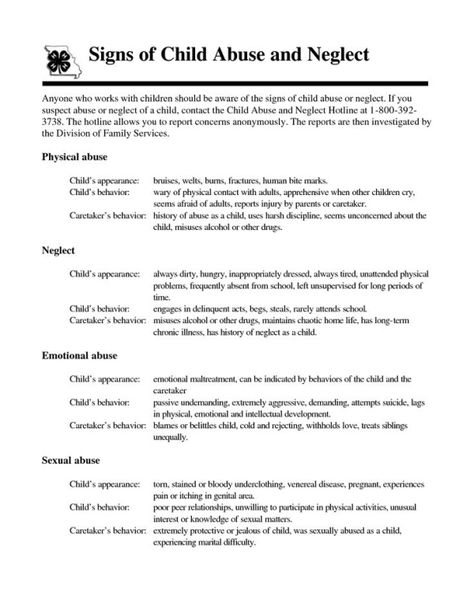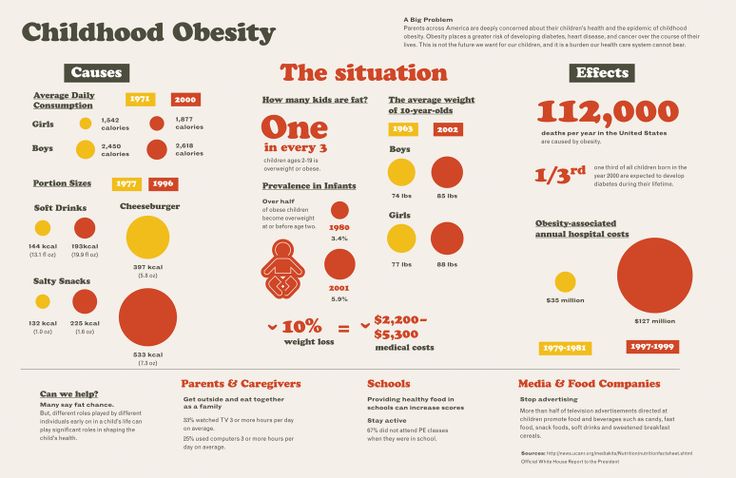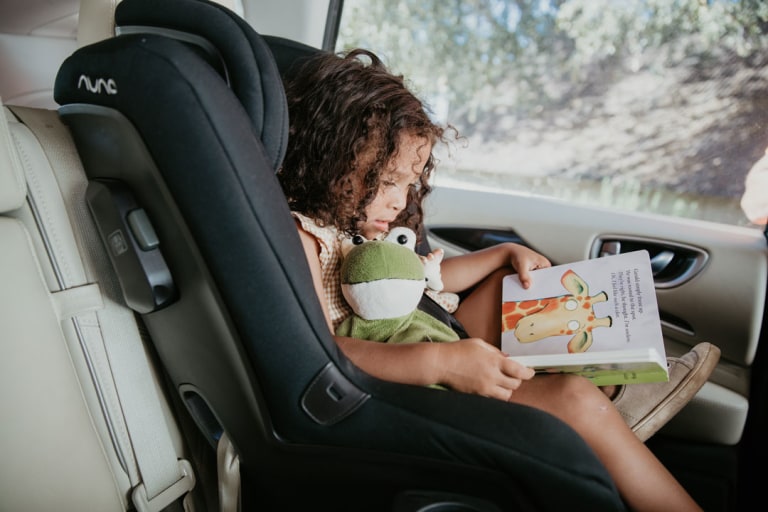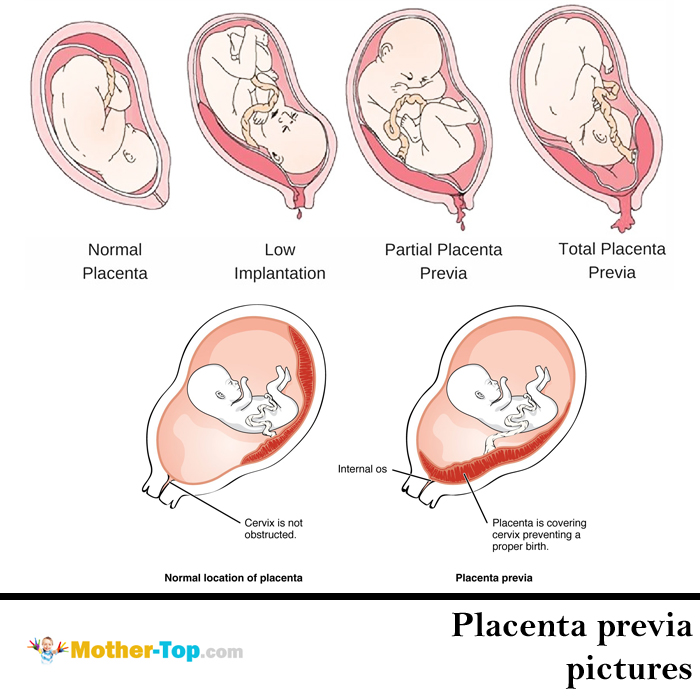Seven month old constipation
Signs and Ways to Offer Relief
Since baby arrived, you’ve probably talked about poop more than you ever imagined. While it might be frustrating to change all those diapers, it’s even more stressful when baby has trouble going or stops altogether. Baby constipation is rough, but sometimes, it’s hard to tell if baby is actually suffering (how little is too little?). Suffice to say, you’ve got poop questions, and we’ve got answers. So is your wee one plugged up, and what does constipated baby poop look like anyway? Here, we’ll give you the lowdown on baby constipation, symptoms to look for, remedies to try and more. You’ll learn what you need to know to get to the bottom of infant constipation and get baby’s belly back on track.
In this article.
Baby constipation: What’s normal and what’s not?
Signs of constipation in babies
What causes constipation in babies
How to help a constipated baby
Baby constipation: When to worry
How to prevent baby constipation
Baby Constipation: What’s Normal and What’s Not?
To figure out if your child has a bout of baby constipation, it’s helpful to know how often infants tend to go. For the first three months, a breastfed baby might have anywhere from 5 to 40 bowel movements a week. Since breastfed babies absorb so much of the milk they take in, some can go up to three or four days—or maybe even a week—without pooping. But as long as when they finally do go it’s soft, pain-free and blood-free, it’s all good, says Lisa Santo Domingo, a pediatric nurse practitioner and medical director of Johns Hopkins Hospital’s Pediatric Chronic Constipation Clinic. Their formula-fed counterparts can have anywhere from 5 to 28 BMs a week (or about two a day).
As infants age, breastfed and formula-fed babies start to have about the same number of poops—so from 6 to 12 months, they’ll both experience an average of two poops a day. Keep in mind, these numbers can vary greatly.
There’s a pretty wide range of what’s normal when it comes to how often baby poops. Children up to 4 years of age have to fulfill two or more of the following criteria for at least one month to be diagnosed as constipated, says Santo Domingo:
- Two or less bowel movements per week
- A pattern of painful or hard bowel movements
- History of excessive stool retention
- A large fecal mass felt in the rectum during a physical exam by baby’s doctor
Signs of Constipation in Babies
In addition to the symptoms mentioned above, you’ll probably notice a few other signs of baby constipation.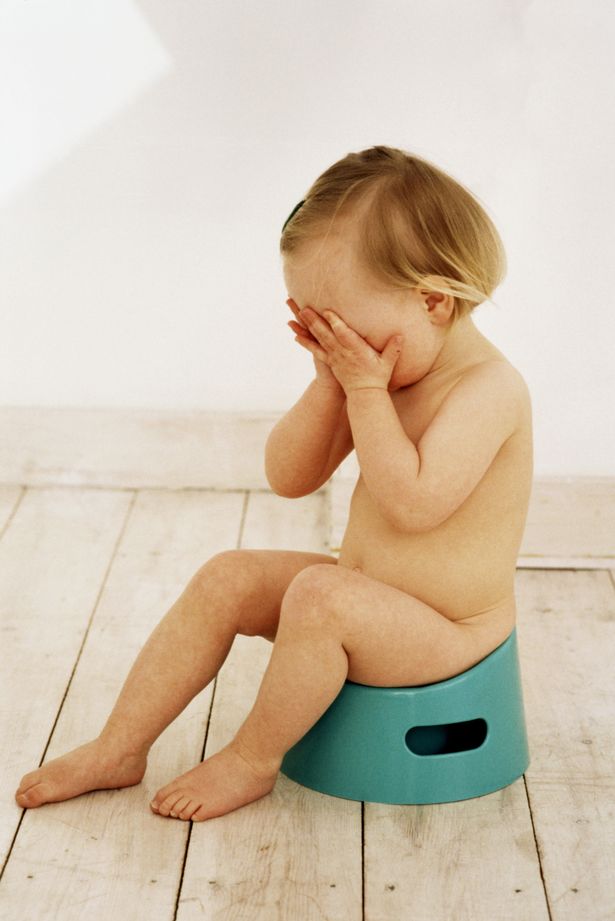 Irritability and a decreased appetite, which might disappear shortly after baby passes a large stool, are often telltale clues.
Irritability and a decreased appetite, which might disappear shortly after baby passes a large stool, are often telltale clues.
Worried about all that moaning and groaning? Take a deep breath; it’s perfectly normal and isn’t a sign of constipation in babies. “Grunting and straining to push out a stool is normal in young babies. It’s difficult for them to pass a bowel movement while lying flat on their backs and not getting any benefit from gravity,” says Trina Blythe, MD, a pediatrician at Progress West Hospital in O’Fallon, Missouri.
Babies’ bodies often need time to figure out the whole pooping process, like learning how to relax their pelvic floor to have a bowel movement. “A lot of parents come in and think their child is constipated, when what they’re really dealing with is infant dyschezia—a condition in which an otherwise normal, healthy infant will have at least 10 minutes (though often more) of straining, crying, irritability and maybe turning red or purple in the face while trying to have a bowel movement,” Santo Domingo explains. These symptoms continue until baby finally goes—but the resulting stool is actually soft.
These symptoms continue until baby finally goes—but the resulting stool is actually soft.
Baby constipation can cause a child to be irritable and fussy, refuse food and push away the bottle. Toddlers who can walk may start going to a corner and squatting or hiding. “The most prevalent cue is when a child starts tip-toeing,” Santo Domingo says. It’s like an instinct they have, feeling that the straighter their body, the better they’ll be able to withhold pooping, which may be painful or scary for constipated children. Even babies who are able to pull themselves to stand will try to straighten out as much as possible when they’re dealing with constipation.
What does constipated baby poop look like?
When baby constipation is to blame, baby’s poop comes out in hard balls. “We often use the Bristol Stool Scale, which shows the range of stool textures from one to seven: One is rabbit-like, pellet-shaped poop, and seven is pure liquid,” Santo Domingo says. “We define constipated stool as anything that falls into levels one through three, with three looking like a collection of grapes or corn on the cob.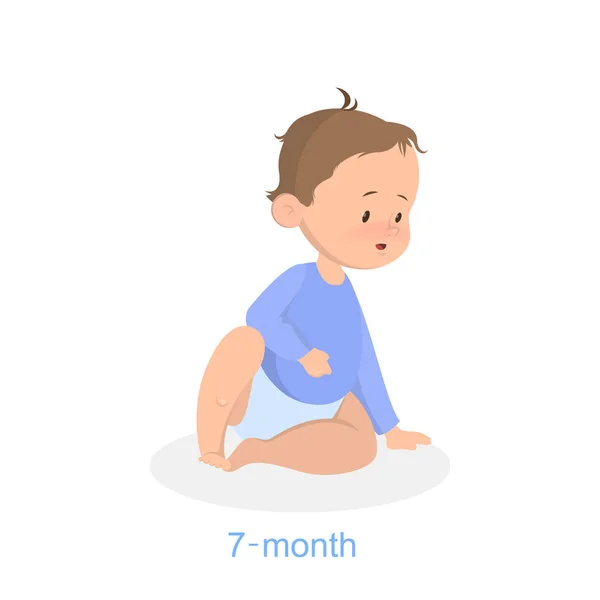 ”
”
Another common sign of constipation in babies is a small amount of blood on the outside of the stool—this can happen when a constipated baby passes stool large enough to create a tiny fissure around the anus. If you’re seeing a significant amount of blood, call your child’s doctor right away.
What Causes Constipation in Babies?
So what causes constipation in babies? Really, it could be due to a number of factors, from foods they’re eating to passing illnesses to family history. Here, we break down the most common reasons behind baby constipation:
-
Change in diet. More often than not, a change in diet is the culprit causing baby constipation—whether it’s because you’re shifting from breast milk to formula, transitioning baby to cow’s milk or introducing solid foods. “The introduction of cow’s milk protein—and an allergy or intolerance to it—is probably the largest contributor to baby constipation,” says Santo Domingo. When baby has a cow’s milk protein intolerance (CMPI), their immune system sees the milk protein as something bad it needs to fight off (like it would with harmful bacteria or viruses).
 This negative reaction to the protein is what leads to a constipated baby with an upset stomach and other intestinal problems. But the good news is that most babies will grow out of it: 50 percent of infants who have CMPI regain tolerance by 12 months, and more than 75 percent will be back on track by age 3.
This negative reaction to the protein is what leads to a constipated baby with an upset stomach and other intestinal problems. But the good news is that most babies will grow out of it: 50 percent of infants who have CMPI regain tolerance by 12 months, and more than 75 percent will be back on track by age 3. -
Solids. When baby is about 4 to 6 months of age, you can start experimenting with different solid foods. This is when many little ones begin to experience baby constipation for the first time. “For infants who have already started baby foods, giving foods that are high in fiber will help treat and prevent baby constipation,” says Blythe. She recommends feeding them at least two servings of fresh fruits and vegetables daily, and making sure they’re well hydrated.
-
Illness. When baby’s not feeling well, they’re probably not eating or drinking as much as usual, which can throw their system out of whack and result in infant constipation.

-
Certain medications. High-dose iron supplements or and certain pain medications can lead to baby constipation. Your doctor can let you know if baby’s medicine could be to blame.
-
Prematurity. Premature babies tend to have more trouble with infant constipation than full-term babies. Since their digestive systems aren’t fully developed yet, food moves more slowly through the GI tract and isn’t always properly processed, which can lead to dry, hard stools.
-
Family history. Certain issues like Hirschsprung’s disease, cystic fibrosis, chronic constipation and celiac disease (which often can’t be diagnosed in children until they’re closer to age 3) can also be a contributing factor.
How to Help a Constipated Baby
No parent likes to see their child in discomfort and distress, so knowing how to help a constipated baby can make a world of difference. First and foremost, though, it’s important to realize that constipation in newborns can be a different issue than constipation in older babies.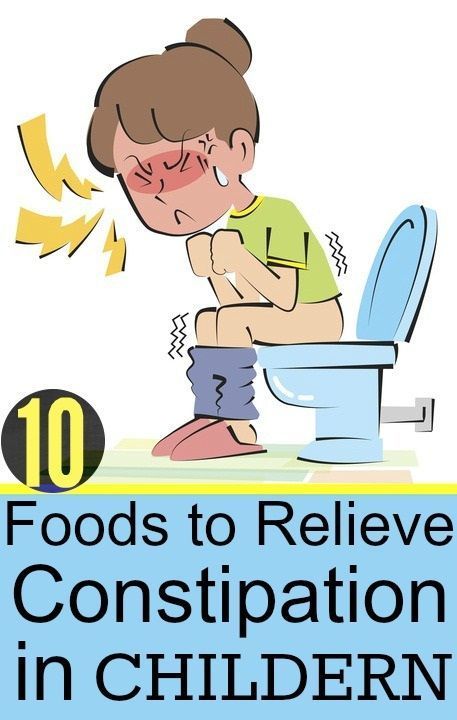 If your baby is not even a month old yet, talk to your pediatrician right away—at this age, constipation could be a sign of an underlying issue, such as Hirschsprung’s disease, a rare congenital condition that happens in about one out of 5,000 births and typically requires surgery. (FYI: This is among the reasons everyone at the hospital is so obsessed with the timing of your newborn passing their first meconium.)
If your baby is not even a month old yet, talk to your pediatrician right away—at this age, constipation could be a sign of an underlying issue, such as Hirschsprung’s disease, a rare congenital condition that happens in about one out of 5,000 births and typically requires surgery. (FYI: This is among the reasons everyone at the hospital is so obsessed with the timing of your newborn passing their first meconium.)
Additionally, if you’re exclusively breastfeeding, it’s important to count those dirty diapers each day because infrequent stooling might actually be a sign of not enough feeding volume, says Blythe.
But if you’ve spoken to your pediatrician and ruled out other issues, there are some baby constipation home remedies and treatments you can turn to. Here are some things you should—and shouldn’t— try to help a constipated baby:
Baby constipation home remedies
For baby constipation relief, you can try giving infants under 6 months with hard bowel movements some water—about one ounce.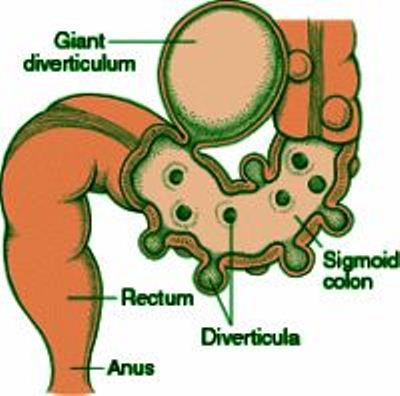 Heard of giving apple or prune juice for baby constipation? Babies 6 to 12 months can have two to four ounces of apple, pear or prune juice a day until their stools soften. “The sugars in juice basically bring water into the bowel to help soften the bowel movement,” Santo Domingo says.
Heard of giving apple or prune juice for baby constipation? Babies 6 to 12 months can have two to four ounces of apple, pear or prune juice a day until their stools soften. “The sugars in juice basically bring water into the bowel to help soften the bowel movement,” Santo Domingo says.
You may have been told that using a rectal thermometer can help offer some infant constipation relief, but Santo Domingo doesn’t recommend any kind of rectal stimulation as a remedy. “You always run the risk of perforation, especially given that that area could be irritated,” she says.
She also discourages giving baby mineral oil or Karo syrup for baby constipation. “We’ve found that it doesn’t help. Karo syrup doesn’t soften the stool—it just coats it to make it easier to pass, but you’re still passing a large stool. And with mineral oil, there have been some reports of aspiration.”
Baby constipation medicine
Wondering what to give a constipated baby? The options are limited.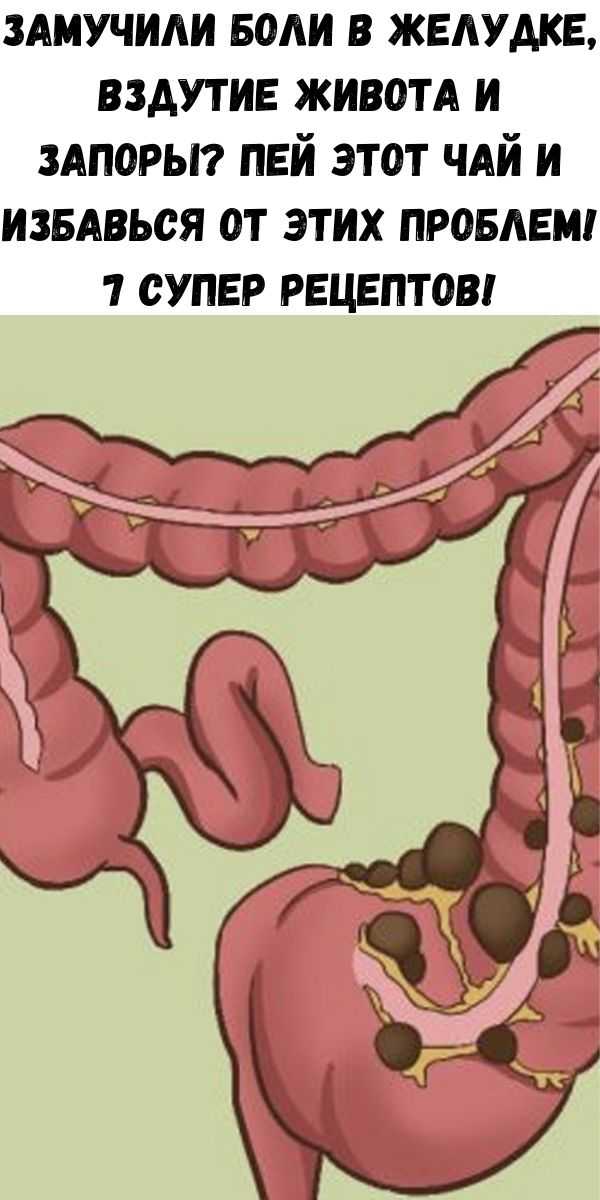 For children who don’t respond to water or juice, you may consider trying a small glycerin suppository to help relieve baby constipation, suggests the Mayo Clinic. It’s important to note, however, that these are meant for occasional use, and shouldn’t be a regular part of baby’s routine.
For children who don’t respond to water or juice, you may consider trying a small glycerin suppository to help relieve baby constipation, suggests the Mayo Clinic. It’s important to note, however, that these are meant for occasional use, and shouldn’t be a regular part of baby’s routine.
Some well-meaning friends may recommend gripe water or gas drops. These remedies are generally considered safe, but there’s little evidence these options work to relieve baby constipation. However, many parents say that the former alleviates colic and other tummy troubles and the latter works miracles breaking up gas bubbles. If your doctor gives you the go ahead, there’s no harm in trying either option.
Similarly, probiotics for baby constipation have been increasing in popularity lately, but Blythe remains skeptical. “Probiotics haven’t yet been proven to relieve constipation in infants, so I generally don’t recommend them.” Still, anecdotally, many parents swear by infant-safe tummy and probiotic drops that can help balance bad and good bacteria in the digestive tract. What’s more, while the evidence isn’t concrete, some research indicates that prophylactic use of probiotics can help alleviate some types of digestive troubles in infants. Suffice to say, it doesn’t hurt to try. Of course, before you give baby constipation medication or remedies at home, check in with your pediatrician.
What’s more, while the evidence isn’t concrete, some research indicates that prophylactic use of probiotics can help alleviate some types of digestive troubles in infants. Suffice to say, it doesn’t hurt to try. Of course, before you give baby constipation medication or remedies at home, check in with your pediatrician.
Baby foods that help with constipation
In some cases, your baby’s doctor may want to consider eliminating cow’s milk for a short period of time to see if that’s causing constipation.
For babies eating solids, you can also offer certain baby foods that help with constipation: Try feeding barley or oatmeal cereals, prunes, peaches, plums, apricots and most vegetables. There’s no need to completely eliminate binding foods like bananas and rice, but it’s a good idea to cut back on them if you’re noticing baby constipation symptoms. “Bananas and rice are common binding agents, because they are soluble fibers that soak up water as they pass through your system, and tend to bulk stools,” Santo Domingo says.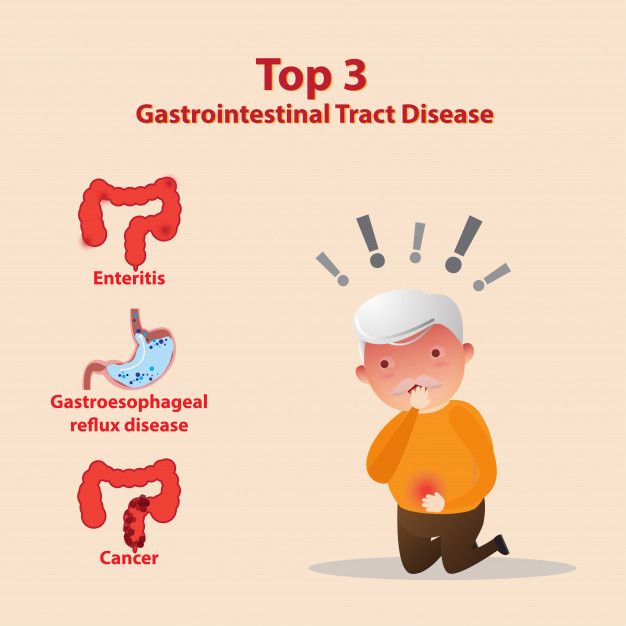
Baby massage for constipation
Want to know how to relieve constipation in babies quickly? One of the easiest things you can try is giving baby a massage. Blythe recommends trying a gentle tummy massage of the left side of the belly to help stimulate the colon. And you can do exercises with baby as well. “Bicycling the hips and holding the knees up in a squat position helps simulate the movements needed to have a bowel movement,” Blythe says. You can also try a warm bath. ‘
Baby Constipation: When to Worry
Baby constipation can be pesky, but it’s typically not cause for concern. Still, if constipation lasts for two or more weeks or if it’s accompanied by other symptoms, including fever and abdominal swelling, reach out to your pediatrician, recommends the Mayo Clinic. If you see blood in your child’s stool, you’ll also want to check in to make sure there are no other issues at play.
How to Prevent Baby Constipation
As for preventing infant constipation, unfortunately there’s a lot you can proactively do. “Prevention really comes down to recognizing the warning signs, and trying to stay on top of them,” Santo Domingo says. Of course, monitoring baby’s diet for foods that cause constipation, giving them a diverse assortment of fibrous fruits and veggies and keeping them hydrated may help.
“Prevention really comes down to recognizing the warning signs, and trying to stay on top of them,” Santo Domingo says. Of course, monitoring baby’s diet for foods that cause constipation, giving them a diverse assortment of fibrous fruits and veggies and keeping them hydrated may help.
About the experts:
Trina Blythe, MD, is a BJC Medical Group pediatrician at Progress West Hospital in O’Fallon, Missouri. She received her medical degree from Albany Medical Center in New York.
Lisa Santo Domingo, DNP, MSN, is a pediatric nurse practitioner and medical director of Johns Hopkins Hospital’s Pediatric Chronic Constipation Clinic. She received her doctor of nursing degree at Johns Hopkins University in Baltimore, Maryland.
Please note: The Bump and the materials and information it contains are not intended to, and do not constitute, medical or other health advice or diagnosis and should not be used as such. You should always consult with a qualified physician or health professional about your specific circumstances.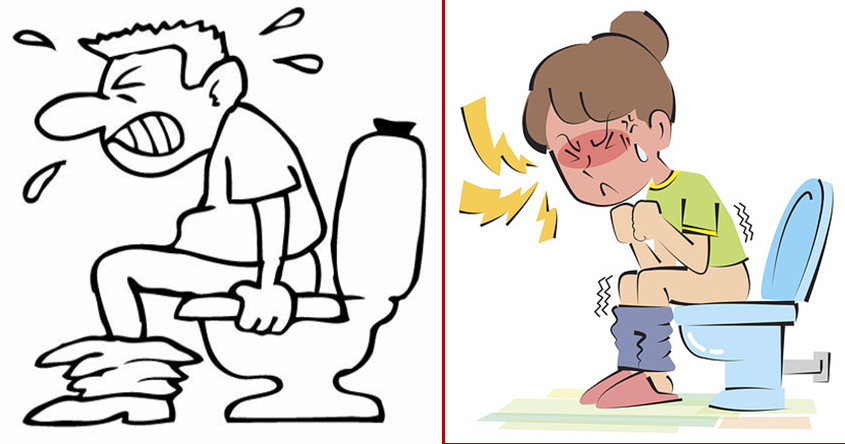
Please note: The Bump and the materials and information it contains are not intended to, and do not constitute, medical or other health advice or diagnosis and should not be used as such. You should always consult with a qualified physician or health professional about your specific circumstances.
Plus, more from The Bump:
What to Do for a Gassy Baby
Colic 101: How to Help Soothe Your Colicky Baby
Why Babies Get Hiccups (and How to Get Rid of Them)
Signs and Ways to Offer Relief
Since baby arrived, you’ve probably talked about poop more than you ever imagined. While it might be frustrating to change all those diapers, it’s even more stressful when baby has trouble going or stops altogether. Baby constipation is rough, but sometimes, it’s hard to tell if baby is actually suffering (how little is too little?). Suffice to say, you’ve got poop questions, and we’ve got answers. So is your wee one plugged up, and what does constipated baby poop look like anyway? Here, we’ll give you the lowdown on baby constipation, symptoms to look for, remedies to try and more. You’ll learn what you need to know to get to the bottom of infant constipation and get baby’s belly back on track.
You’ll learn what you need to know to get to the bottom of infant constipation and get baby’s belly back on track.
In this article.
Baby constipation: What’s normal and what’s not?
Signs of constipation in babies
What causes constipation in babies
How to help a constipated baby
Baby constipation: When to worry
How to prevent baby constipation
Baby Constipation: What’s Normal and What’s Not?
To figure out if your child has a bout of baby constipation, it’s helpful to know how often infants tend to go. For the first three months, a breastfed baby might have anywhere from 5 to 40 bowel movements a week. Since breastfed babies absorb so much of the milk they take in, some can go up to three or four days—or maybe even a week—without pooping. But as long as when they finally do go it’s soft, pain-free and blood-free, it’s all good, says Lisa Santo Domingo, a pediatric nurse practitioner and medical director of Johns Hopkins Hospital’s Pediatric Chronic Constipation Clinic. Their formula-fed counterparts can have anywhere from 5 to 28 BMs a week (or about two a day).
As infants age, breastfed and formula-fed babies start to have about the same number of poops—so from 6 to 12 months, they’ll both experience an average of two poops a day. Keep in mind, these numbers can vary greatly.
There’s a pretty wide range of what’s normal when it comes to how often baby poops. Children up to 4 years of age have to fulfill two or more of the following criteria for at least one month to be diagnosed as constipated, says Santo Domingo:
- Two or less bowel movements per week
- A pattern of painful or hard bowel movements
- History of excessive stool retention
- A large fecal mass felt in the rectum during a physical exam by baby’s doctor
Signs of Constipation in Babies
In addition to the symptoms mentioned above, you’ll probably notice a few other signs of baby constipation. Irritability and a decreased appetite, which might disappear shortly after baby passes a large stool, are often telltale clues.
Worried about all that moaning and groaning? Take a deep breath; it’s perfectly normal and isn’t a sign of constipation in babies. “Grunting and straining to push out a stool is normal in young babies. It’s difficult for them to pass a bowel movement while lying flat on their backs and not getting any benefit from gravity,” says Trina Blythe, MD, a pediatrician at Progress West Hospital in O’Fallon, Missouri.
Babies’ bodies often need time to figure out the whole pooping process, like learning how to relax their pelvic floor to have a bowel movement. “A lot of parents come in and think their child is constipated, when what they’re really dealing with is infant dyschezia—a condition in which an otherwise normal, healthy infant will have at least 10 minutes (though often more) of straining, crying, irritability and maybe turning red or purple in the face while trying to have a bowel movement,” Santo Domingo explains. These symptoms continue until baby finally goes—but the resulting stool is actually soft.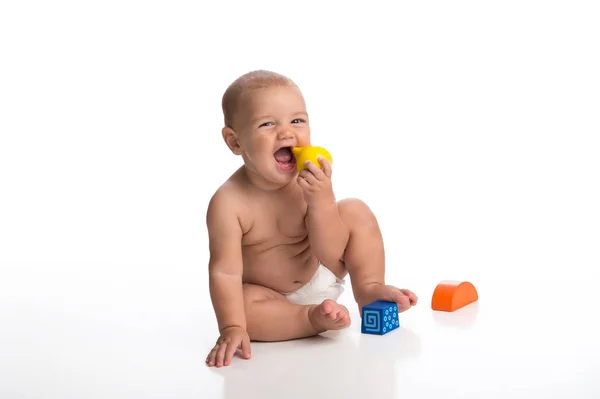
Baby constipation can cause a child to be irritable and fussy, refuse food and push away the bottle. Toddlers who can walk may start going to a corner and squatting or hiding. “The most prevalent cue is when a child starts tip-toeing,” Santo Domingo says. It’s like an instinct they have, feeling that the straighter their body, the better they’ll be able to withhold pooping, which may be painful or scary for constipated children. Even babies who are able to pull themselves to stand will try to straighten out as much as possible when they’re dealing with constipation.
What does constipated baby poop look like?
When baby constipation is to blame, baby’s poop comes out in hard balls. “We often use the Bristol Stool Scale, which shows the range of stool textures from one to seven: One is rabbit-like, pellet-shaped poop, and seven is pure liquid,” Santo Domingo says. “We define constipated stool as anything that falls into levels one through three, with three looking like a collection of grapes or corn on the cob. ”
Another common sign of constipation in babies is a small amount of blood on the outside of the stool—this can happen when a constipated baby passes stool large enough to create a tiny fissure around the anus. If you’re seeing a significant amount of blood, call your child’s doctor right away.
What Causes Constipation in Babies?
So what causes constipation in babies? Really, it could be due to a number of factors, from foods they’re eating to passing illnesses to family history. Here, we break down the most common reasons behind baby constipation:
-
Change in diet. More often than not, a change in diet is the culprit causing baby constipation—whether it’s because you’re shifting from breast milk to formula, transitioning baby to cow’s milk or introducing solid foods. “The introduction of cow’s milk protein—and an allergy or intolerance to it—is probably the largest contributor to baby constipation,” says Santo Domingo. When baby has a cow’s milk protein intolerance (CMPI), their immune system sees the milk protein as something bad it needs to fight off (like it would with harmful bacteria or viruses).
This negative reaction to the protein is what leads to a constipated baby with an upset stomach and other intestinal problems. But the good news is that most babies will grow out of it: 50 percent of infants who have CMPI regain tolerance by 12 months, and more than 75 percent will be back on track by age 3.
-
Solids. When baby is about 4 to 6 months of age, you can start experimenting with different solid foods. This is when many little ones begin to experience baby constipation for the first time. “For infants who have already started baby foods, giving foods that are high in fiber will help treat and prevent baby constipation,” says Blythe. She recommends feeding them at least two servings of fresh fruits and vegetables daily, and making sure they’re well hydrated.
-
Illness. When baby’s not feeling well, they’re probably not eating or drinking as much as usual, which can throw their system out of whack and result in infant constipation.
-
Certain medications. High-dose iron supplements or and certain pain medications can lead to baby constipation. Your doctor can let you know if baby’s medicine could be to blame.
-
Prematurity. Premature babies tend to have more trouble with infant constipation than full-term babies. Since their digestive systems aren’t fully developed yet, food moves more slowly through the GI tract and isn’t always properly processed, which can lead to dry, hard stools.
-
Family history. Certain issues like Hirschsprung’s disease, cystic fibrosis, chronic constipation and celiac disease (which often can’t be diagnosed in children until they’re closer to age 3) can also be a contributing factor.
How to Help a Constipated Baby
No parent likes to see their child in discomfort and distress, so knowing how to help a constipated baby can make a world of difference. First and foremost, though, it’s important to realize that constipation in newborns can be a different issue than constipation in older babies. If your baby is not even a month old yet, talk to your pediatrician right away—at this age, constipation could be a sign of an underlying issue, such as Hirschsprung’s disease, a rare congenital condition that happens in about one out of 5,000 births and typically requires surgery. (FYI: This is among the reasons everyone at the hospital is so obsessed with the timing of your newborn passing their first meconium.)
Additionally, if you’re exclusively breastfeeding, it’s important to count those dirty diapers each day because infrequent stooling might actually be a sign of not enough feeding volume, says Blythe.
But if you’ve spoken to your pediatrician and ruled out other issues, there are some baby constipation home remedies and treatments you can turn to. Here are some things you should—and shouldn’t— try to help a constipated baby:
Baby constipation home remedies
For baby constipation relief, you can try giving infants under 6 months with hard bowel movements some water—about one ounce. Heard of giving apple or prune juice for baby constipation? Babies 6 to 12 months can have two to four ounces of apple, pear or prune juice a day until their stools soften. “The sugars in juice basically bring water into the bowel to help soften the bowel movement,” Santo Domingo says.
Heard of giving apple or prune juice for baby constipation? Babies 6 to 12 months can have two to four ounces of apple, pear or prune juice a day until their stools soften. “The sugars in juice basically bring water into the bowel to help soften the bowel movement,” Santo Domingo says.
You may have been told that using a rectal thermometer can help offer some infant constipation relief, but Santo Domingo doesn’t recommend any kind of rectal stimulation as a remedy. “You always run the risk of perforation, especially given that that area could be irritated,” she says.
She also discourages giving baby mineral oil or Karo syrup for baby constipation. “We’ve found that it doesn’t help. Karo syrup doesn’t soften the stool—it just coats it to make it easier to pass, but you’re still passing a large stool. And with mineral oil, there have been some reports of aspiration.”
Baby constipation medicine
Wondering what to give a constipated baby? The options are limited. For children who don’t respond to water or juice, you may consider trying a small glycerin suppository to help relieve baby constipation, suggests the Mayo Clinic. It’s important to note, however, that these are meant for occasional use, and shouldn’t be a regular part of baby’s routine.
For children who don’t respond to water or juice, you may consider trying a small glycerin suppository to help relieve baby constipation, suggests the Mayo Clinic. It’s important to note, however, that these are meant for occasional use, and shouldn’t be a regular part of baby’s routine.
Some well-meaning friends may recommend gripe water or gas drops. These remedies are generally considered safe, but there’s little evidence these options work to relieve baby constipation. However, many parents say that the former alleviates colic and other tummy troubles and the latter works miracles breaking up gas bubbles. If your doctor gives you the go ahead, there’s no harm in trying either option.
Similarly, probiotics for baby constipation have been increasing in popularity lately, but Blythe remains skeptical. “Probiotics haven’t yet been proven to relieve constipation in infants, so I generally don’t recommend them.” Still, anecdotally, many parents swear by infant-safe tummy and probiotic drops that can help balance bad and good bacteria in the digestive tract.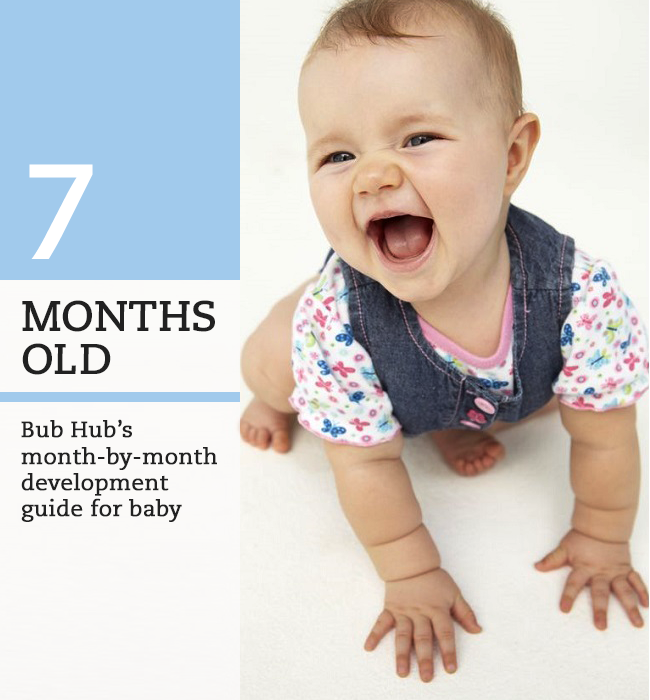 What’s more, while the evidence isn’t concrete, some research indicates that prophylactic use of probiotics can help alleviate some types of digestive troubles in infants. Suffice to say, it doesn’t hurt to try. Of course, before you give baby constipation medication or remedies at home, check in with your pediatrician.
What’s more, while the evidence isn’t concrete, some research indicates that prophylactic use of probiotics can help alleviate some types of digestive troubles in infants. Suffice to say, it doesn’t hurt to try. Of course, before you give baby constipation medication or remedies at home, check in with your pediatrician.
Baby foods that help with constipation
In some cases, your baby’s doctor may want to consider eliminating cow’s milk for a short period of time to see if that’s causing constipation.
For babies eating solids, you can also offer certain baby foods that help with constipation: Try feeding barley or oatmeal cereals, prunes, peaches, plums, apricots and most vegetables. There’s no need to completely eliminate binding foods like bananas and rice, but it’s a good idea to cut back on them if you’re noticing baby constipation symptoms. “Bananas and rice are common binding agents, because they are soluble fibers that soak up water as they pass through your system, and tend to bulk stools,” Santo Domingo says.
Baby massage for constipation
Want to know how to relieve constipation in babies quickly? One of the easiest things you can try is giving baby a massage. Blythe recommends trying a gentle tummy massage of the left side of the belly to help stimulate the colon. And you can do exercises with baby as well. “Bicycling the hips and holding the knees up in a squat position helps simulate the movements needed to have a bowel movement,” Blythe says. You can also try a warm bath. ‘
Baby Constipation: When to Worry
Baby constipation can be pesky, but it’s typically not cause for concern. Still, if constipation lasts for two or more weeks or if it’s accompanied by other symptoms, including fever and abdominal swelling, reach out to your pediatrician, recommends the Mayo Clinic. If you see blood in your child’s stool, you’ll also want to check in to make sure there are no other issues at play.
How to Prevent Baby Constipation
As for preventing infant constipation, unfortunately there’s a lot you can proactively do. “Prevention really comes down to recognizing the warning signs, and trying to stay on top of them,” Santo Domingo says. Of course, monitoring baby’s diet for foods that cause constipation, giving them a diverse assortment of fibrous fruits and veggies and keeping them hydrated may help.
“Prevention really comes down to recognizing the warning signs, and trying to stay on top of them,” Santo Domingo says. Of course, monitoring baby’s diet for foods that cause constipation, giving them a diverse assortment of fibrous fruits and veggies and keeping them hydrated may help.
About the experts:
Trina Blythe, MD, is a BJC Medical Group pediatrician at Progress West Hospital in O’Fallon, Missouri. She received her medical degree from Albany Medical Center in New York.
Lisa Santo Domingo, DNP, MSN, is a pediatric nurse practitioner and medical director of Johns Hopkins Hospital’s Pediatric Chronic Constipation Clinic. She received her doctor of nursing degree at Johns Hopkins University in Baltimore, Maryland.
Please note: The Bump and the materials and information it contains are not intended to, and do not constitute, medical or other health advice or diagnosis and should not be used as such. You should always consult with a qualified physician or health professional about your specific circumstances.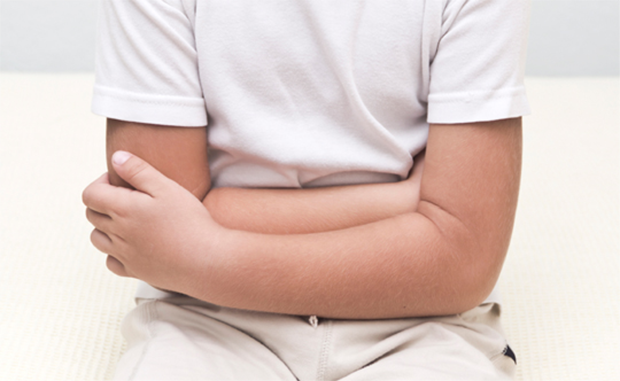
Please note: The Bump and the materials and information it contains are not intended to, and do not constitute, medical or other health advice or diagnosis and should not be used as such. You should always consult with a qualified physician or health professional about your specific circumstances.
Plus, more from The Bump:
What to Do for a Gassy Baby
Colic 101: How to Help Soothe Your Colicky Baby
Why Babies Get Hiccups (and How to Get Rid of Them)
Constipation in children under one year old
Usually, parents of babies are worried about the exact opposite problem - too frequent stools. Therefore, not everyone immediately understands what to do if a baby under one year old has constipation.
Gastroenterologist, hepatologist at GMS Clinic Sergey Vyalov gave an interview to the Internet portal parents.ru and spoke about constipation in children under one year old.
Introduction
Constipation, also known as diarrhea, stool retention, discolia, caprostasis, difficulty in emptying the bowel is not a universal condition with unambiguous characteristics.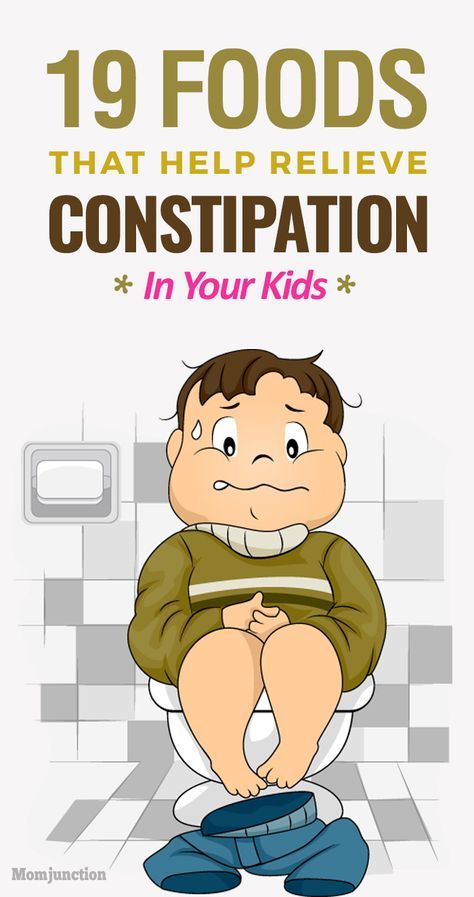 Each person, including a child, has his own indicators of the norm and deviations from it, associated with age, intestinal microflora, diet, state of mind and hormonal background, concomitant diseases. Yet there are a few common points of reference.
Each person, including a child, has his own indicators of the norm and deviations from it, associated with age, intestinal microflora, diet, state of mind and hormonal background, concomitant diseases. Yet there are a few common points of reference.
What is constipation?
Specialists diagnose constipation if the baby does "big" things:
- regularly and without problems, but passing dry and hard stools;
- with difficulty - the child has to push, the feces do not come out on the first try;
- less than 5 times per day.
In the first six months of life, constipation is a rather rare occurrence, rather, on the contrary, in the period from 0 to 6 months, 6-10 bowel movements per day are considered the norm. Breastfed babies have more frequent bowel movements, while artificial babies have less.
Up to 6 months constipation is rare
Usually, parents of babies in the first months of life are alarmed by the condition opposite to constipation - too frequent bowel movements.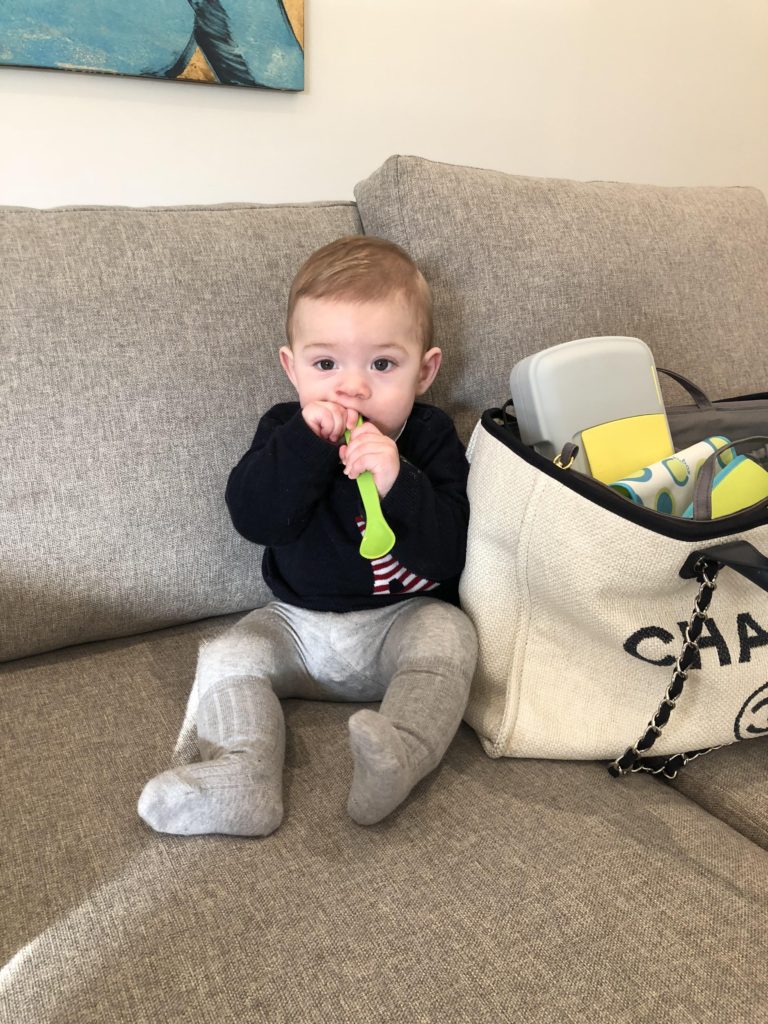 But in a baby, regardless of whether he eats breast milk or formula, the intestines should work exactly like this - in a mode that is considered diarrhea for older children and adults.
But in a baby, regardless of whether he eats breast milk or formula, the intestines should work exactly like this - in a mode that is considered diarrhea for older children and adults.
There should be no other option, at least until the introduction of complementary foods at 4-6 months. After all, the baby receives mostly liquid food, the waste products of which have the same consistency and leave the intestines without encountering any obstacles on the way - the baby has not yet learned to control the sphincter that restrains the release of feces.
The baby's intestines have just begun to "get acquainted" with microorganisms that come from mother's milk, from her skin (the baby licks the nipple), from the environment. Far from all new "partners" are accepted: there are rejected ones, those who have not taken root, and so on. Checking and rejection are accompanied by loose, unstable stools.
Too frequent bowel cleansing does not need correction and treatment if the child is gaining weight and developing properly. Normal appetite and sleep, gas, absence of fever and other signs of illness indicate that parents have nothing to worry about. If the mother of a baby, tired of changing diapers 10 times in one day, wants to change the situation and asks the doctor to prescribe fixing medicines for the baby, then, unwittingly, she will doom her baby to chronic constipation.
Normal appetite and sleep, gas, absence of fever and other signs of illness indicate that parents have nothing to worry about. If the mother of a baby, tired of changing diapers 10 times in one day, wants to change the situation and asks the doctor to prescribe fixing medicines for the baby, then, unwittingly, she will doom her baby to chronic constipation.
Not according to the rules
And yet, in the first 6 months, constipation in infants is not excluded. It can be called:
- microflora transmitted from the mother;
- insufficient fluid volume;
- stress.
Let's say a woman has too many methane-producing bacteria in her stomach and intestines that cause constipation. They grow rather slowly, ferment, releasing carbon dioxide, which contributes to flatulence and bloating. With this deviation, the woman lives, adapted and learned to solve the problem with the intestines in one way or another. Noticing the same thing in a child, she decides that the baby has inherited her features and "saves" him with the same means, making a mistake.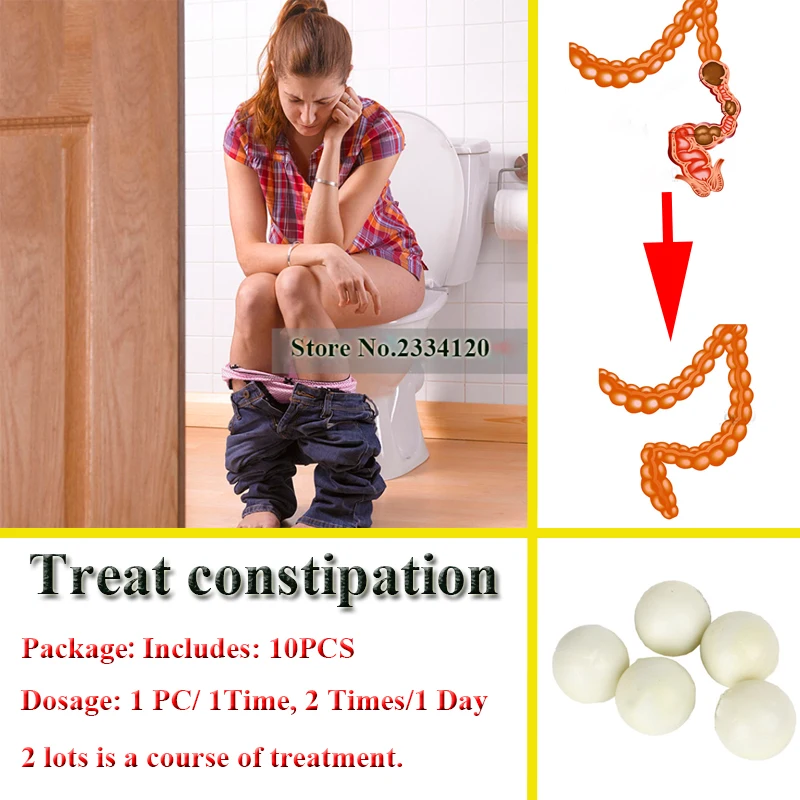 Babies should not be given laxatives, especially those containing senna. The baby's body gets used to such drugs too quickly and without them it can no longer cleanse the intestines.
Babies should not be given laxatives, especially those containing senna. The baby's body gets used to such drugs too quickly and without them it can no longer cleanse the intestines.
Constipation in a baby up to 6 months is also provoked by a lack of fluid and hormonal fluctuations. At 6 months, the baby should receive a lot of moisture - about 140 ml per kilogram of weight per day. A breastfed child gains this rate from mother's milk and does not need additional sources of liquid (but only if there is no predisposition to constipation). Little artificers are soldered from the moment they switch to a mixture.
If a woman is tense or nervous, then her level of the stress hormone cortisol rises. Through breast milk, saliva or sweat, the substance enters the baby's body and also provokes constipation.
Even if the mother does not breastfeed the baby, the constipating microorganisms sooner or later get to the gastrointestinal system of the crumbs and make negative changes in it.
Constipation after introduction of complementary foods
The kid is growing, improving his skills, and it's time to introduce him to new foods. These circumstances, on the one hand, help to establish peristalsis, and on the other hand, increase the risk of constipation.
By six months, the baby is already trying to control defecation, because he realized that after it there are unpleasant sensations - itching, burning and other discomfort in the areas where the feces get. In order not to experience discomfort, the child tries to restrain the urge. At first, he does not succeed, because the rectum has already learned how to work - reflexively contract and push out waste. And after a couple of months, everything works out, the baby wins and enters the path leading to chronic constipation. To get the baby out of this vicious circle, the mother must minimize the duration of the baby's skin contact with feces and expand the baby's diet by mastering complementary foods.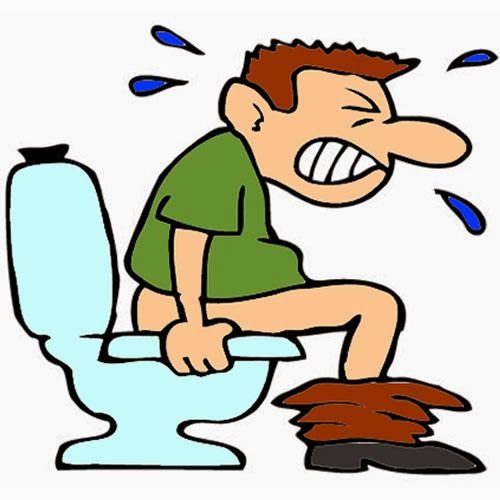
Proteins, fats and carbohydrates that are part of the products are absorbed in the small intestine, and do not reach the large intestine, where feces are formed. What can not be said about fiber. While the baby is drinking breast milk or formula, this component of the dishes is not familiar to him. Even if a nursing woman herself consumes a lot of plant foods, the baby does not get anything. Fiber, as already noted, is not absorbed in the intestines, does not enter the bloodstream, which means that it is not in breast milk. For the first time, a baby gets fiber with complementary foods by trying its first 25 grams of mashed potatoes from zucchini, carrots and other vegetables. Plant fibers literally attract all waste to themselves, as a result, fecal masses are formed, which help the intestines to master the correct peristalsis. There are a lot of muscles in this section of the gastrointestinal tract, in the intestines, they must learn to consistently contract - tighten and relax in order to squeeze waste out.
The next new product should be introduced one month after the previous one. The novelty is likely to cause more frequent and loose stools at first. If it does not have a green color and does not foam, there is no need to run to the doctor and ask to prescribe fixatives. Be patient, after a while the innovation will be mastered and will bear fruit. Instead of liquid and shapeless yellow-white feces, you will see brown feces that have formed.
Special constipation
There are other causes of constipation in babies. Unfortunately, they are much more difficult to deal with, since these are developmental pathologies, diseases, and injuries.
Acute constipation. It develops for anatomical reasons, for example, due to obstruction of the large intestine, or during intussusception - the introduction of one part of the intestine into another, which causes blockage of the lumen. Against the background of complete well-being, the baby suddenly becomes restless, cries, refuses to eat.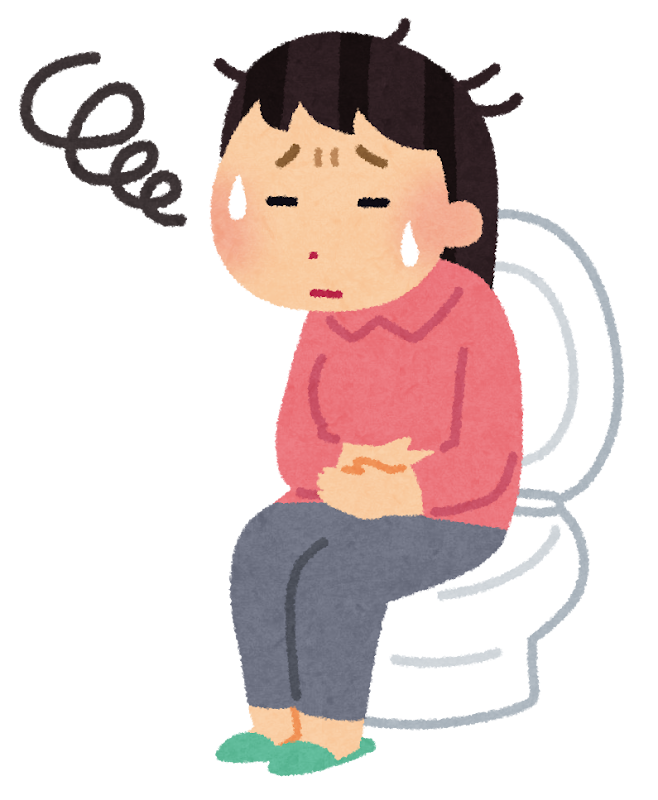 The attack ends as unexpectedly as it began, but after 3-5 minutes it repeats and intensifies: one or two times vomiting appears with an admixture of green bile. If the stool passes, then blood impurities are visible in it. After 5–6 hours, the stool stops, and bloody discharge comes out of the rectum. At the same time, the baby's stomach is soft. The temperature is usually normal. The child may even lose consciousness. With such symptoms, you need to call an ambulance.
The attack ends as unexpectedly as it began, but after 3-5 minutes it repeats and intensifies: one or two times vomiting appears with an admixture of green bile. If the stool passes, then blood impurities are visible in it. After 5–6 hours, the stool stops, and bloody discharge comes out of the rectum. At the same time, the baby's stomach is soft. The temperature is usually normal. The child may even lose consciousness. With such symptoms, you need to call an ambulance.
Hirschsprung disease. It is based on a violation of the innervation of the large intestine - the central nervous system cannot control this section of the gastrointestinal tract. As a result, processed food accumulates in the intestines. The picture of the disease is quite diverse. If only the short part of the intestine is affected, then constipation forms gradually, and it is possible to do without surgical intervention for quite a long time. When a longer segment is affected, the absence of stool is fraught with a serious condition and immediate surgical intervention is required.
infectious attack. If in the first months of life the baby suffered an intestinal infection, the nerve cells in the large intestine may die, which will lead to a delay in the act of defecation, accumulation of feces and the development of constipation. With dysentery, the so-called toxic megacolon is possible (a sharp expansion of the colon). The child develops impaired consciousness and repeated vomiting. The abdomen increases sharply due to a greatly enlarged intestine. The complication requires emergency surgical care.
Problems with the CNS. Injuries during childbirth and the syndrome of infantile cerebral palsy also affect the functioning of the gastrointestinal tract, as they are associated with various complications, such as impaired swallowing, regurgitation, and vomiting.
Vasculitis. Vascular inflammation extends to the nerve plexuses and sensitive cells located in the intestinal wall.
Disorders in the work of the endocrine system. With hypothyroidism (lack of thyroid function), the movement of contents through the intestines slows down. With dysfunction of the parathyroid glands, constipation occurs due to a violation of mineral metabolism, with diabetes mellitus it becomes the result of damage to the nerve plexuses of the intestine or dehydration of the child's body.
With hypothyroidism (lack of thyroid function), the movement of contents through the intestines slows down. With dysfunction of the parathyroid glands, constipation occurs due to a violation of mineral metabolism, with diabetes mellitus it becomes the result of damage to the nerve plexuses of the intestine or dehydration of the child's body.
Medical constipation. Before giving your child any drug prescribed by a doctor, carefully read the instructions. For example, anemia remedies containing iron can cause constipation. Observance of the rules of intake will help to avoid it - directly during meals, reducing doses of iron when introducing foods with a high iron content into the diet - buckwheat, apples, greens. Particular attention should be paid to constipation resulting from treatment with non-steroidal anti-inflammatory drugs, neuroleptics, sorbents and antibiotics, which cause intestinal dysbacteriosis.
Diseases and conditions accompanied by constipation are not so common in infants. Many pediatricians do not immediately remember them. Before getting to the truth, they prescribe a lot of unnecessary drugs, forgetting about effective bowel examinations, such as x-rays.
Many pediatricians do not immediately remember them. Before getting to the truth, they prescribe a lot of unnecessary drugs, forgetting about effective bowel examinations, such as x-rays.
Source: parents.ru
Constipation in children. Prevention. Diet therapy
home
Articles
Health
Sabitova Vasily Ilyasovna Gastroenterologist
06/21/2019
Constipation is widespread among both adults and children (5-30% depending on the diagnostic criteria). Symptoms become chronic in more than 30% of patients, not only cause discomfort and pain to the child himself, but also disrupt the quality of life of his family.
CONSTIPATION - a condition manifested by an increase in the intervals between bowel movements (compared to the individual norm) or systematically slow, difficult and / or insufficient bowel movements. Constipation also includes stools with “gruel”, but after defecation was absent for up to 3 days.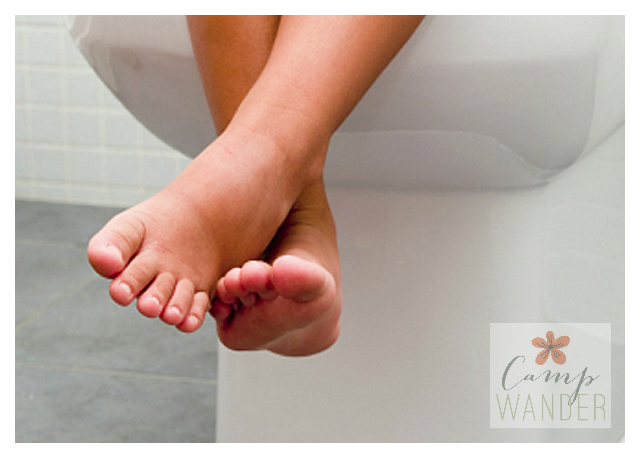
Constipation can be related to functional or organic causes (abnormalities, inflammation). In children, 90-95% of constipation is functional. The peak incidence of functional constipation falls on 2-4 years, when they begin to accustom the child to the potty / toilet.
Main causes of functional constipation
- Pain
- Fever
- Dehydration
- Wrong diet of a nursing mother
- Insufficient drinking regime of a child with artificial feeding
- Insufficient drinking regimen of a breast-fed child with the introduction of complementary foods
- Early transfer of a child to artificial feeding
- Fast transition of the baby from one mixture to another (less than 7 days)
- Irrational nutrition of the child (for a long time the child receives food with a large amount of proteins, fats and insufficient dietary fiber, abuse of drinks containing a large amount of astringents - tea, coffee, cocoa)
- Excessive use of baby care products or the development of an allergic reaction of the skin of the perianal area
- Consequences of perinatal injuries of the nervous system
- Rickets, vitamin D deficiency
- Anemia
- Impaired thyroid function (deficiency - hypothyroidism)
- Food allergy, especially cow's milk protein allergy
- Forced potty training, period of adaptation to new conditions (nursery, kindergarten)
- Physical inactivity - a sedentary lifestyle
- Mental trauma or stress
- Systematic suppression of the urge to empty the bowels, associated, for example, with the start of attending kindergarten, school, etc.
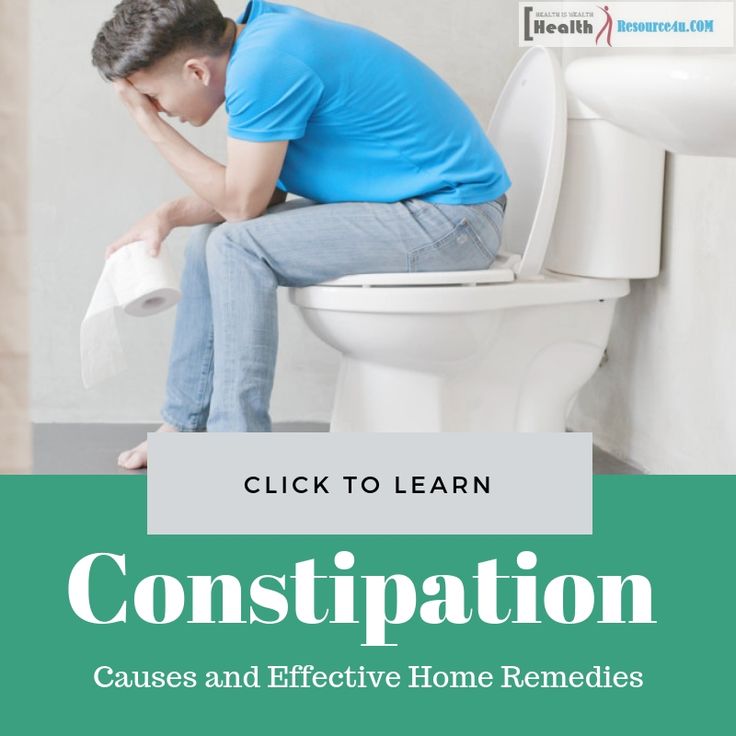
- Taking certain drugs
- Constipation in family members
Frequency of defecation in children of different ages
| Age | Number of bowel movements per week | Number of bowel movements per day |
| 0 – 3 months breastfeeding artificial feeding | 5 - 40 5 - 20 | 2.9 2.0 |
| 6 - 12 months | 5 - 28 | 1.8 |
| 1 - 3 years | 4-21 | 1.4 |
| 4 years and older | 3 - 14 | 1.0 |
In addition to the frequency of the chair, you should pay attention to its nature. For a more objective assessment, the “Bristol fecal shape scale” is convenient, since it is the shape of the feces, and not the frequency of the stool, that is more consistent with the time of intestinal transit.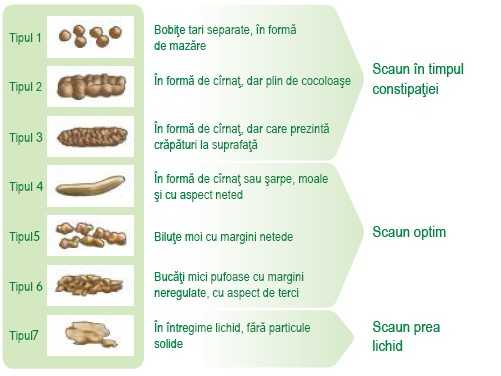
Bristol stool chart
In accordance with this scale, 3 and 4 form of feces is regarded as normal, and 1 and 2 indicate delayed transit (constipation). Quite often, in practice, there are situations when a child has a bowel movement frequency within the normal range, but the stool is dense, fragmented, in a meager amount. These signs indicate incomplete emptying of the bowels and are considered as manifestations of constipation.
The consistency of the stool in newborns and infants should be mushy. From 6 months to 1.5 - 2 years, feces can be both formalized and mushy. From the age of two, the chair must be decorated.
Signs and symptoms of constipation
- abdominal pain, often bursting, aching, sometimes colicky
- bloating
- change in the shape and consistency of the stool
- excessive flatulence
- unpleasant smell of flatus and stool
- may have pain during bowel movements
- straining to defecate
- there may be blood in the stool - on the surface of the feces or in the form of traces on a napkin (indicates an anal fissure)
If you do not eliminate constipation and do not establish bowel movements, then there is a risk of coprostasis (formation of fecal stones) and fecal intoxication:
- loss of appetite
- lack of energy
- general malaise
- depression, irritability
- nausea, vomiting
- skin symptoms - dryness, rash, peeling
- fecal incontinence, stool spotting
- urinary retention and incontinence due to pressure from a crowded bowel on the bladder
- bleeding from fissures, hemorrhoids
The treatment of constipation involves the following goals:
1.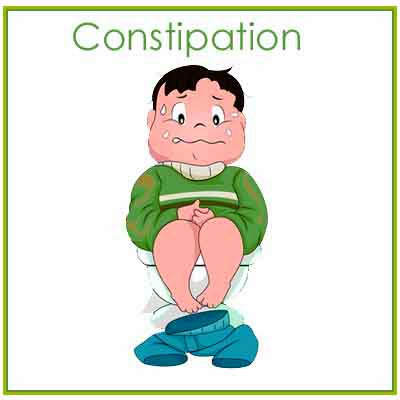 Normalization of stool consistency (soft, painless stools)
Normalization of stool consistency (soft, painless stools)
2. Regularity of bowel movements (prevention of re-accumulation of feces)
The treatment of constipation is a sequential, complex, individual process and consists of several stages:
- child and parent education
- correction of nutrition and drinking regimen
- elimination of existing coprostasis with the help of medications
- maintenance therapy
It is necessary to exclude factors that provoke and contribute to constipation (normalization of motor and nutritional regimen, discontinuation of medications that can cause constipation, identification of a food allergen, exclusion or confirmation of neuromuscular disease, celiac disease, etc.).
Lifestyle normalization includes:
- development of a conditioned reflex
- mobile lifestyle
- gymnastics
- gentle abdominal massage training
- for small children - laying out on the stomach, bending the legs to the stomach.
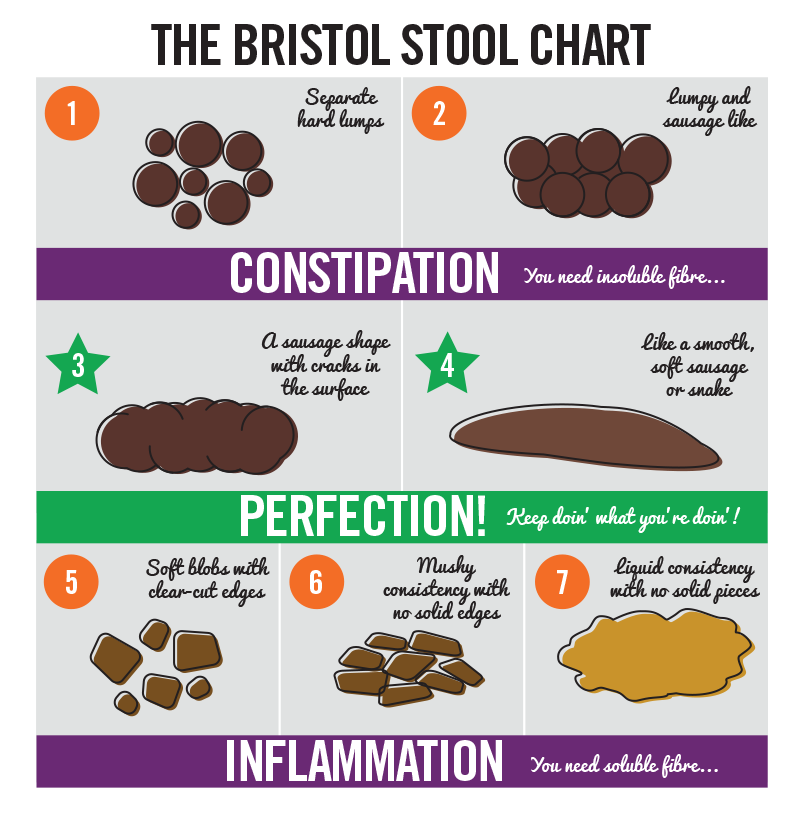
Education is the first step in the treatment of functional constipation. It must be remembered that episodes of fecal smearing and encopresis (fecal incontinence) are not arbitrary and should not be blamed on the child, who may already be frightened and disoriented. In some cases, when the intra-family situation is difficult, the help of a family psychologist may be needed.
It is important to understand that the treatment of functional constipation can be lengthy, based on trust, partnership and requires patience. Modern laxatives that are legal in children will not make the intestines “lazy”, will not cause “addiction”, they enter the bloodstream in minimal amounts or are not absorbed at all and are safe for long-term use.
Correction of the behavior of a child with constipation is based on the development of a routine of visiting the toilet, in order to achieve regular defecation. Defecation should be every time at the same time. The urge to defecate is based on the gastrocecal reflex, which manifests itself in the morning 1 hour after eating.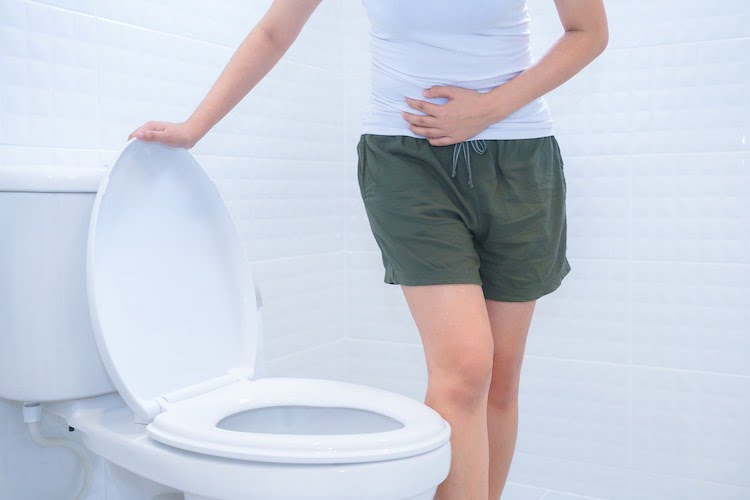 A child with constipation needs to spend 3-10 minutes in the toilet (depending on age). It is necessary to plant the child on a potty or offer to visit the toilet after each meal.
A child with constipation needs to spend 3-10 minutes in the toilet (depending on age). It is necessary to plant the child on a potty or offer to visit the toilet after each meal.
A prerequisite for effective defecation is to provide a good support for the legs (a low bench on which the child can put his feet), which helps to increase intra-abdominal pressure.
If the defecation is not successful, the child should never be punished and vice versa. The daily frequency of bowel movements can be noted in a diary, which can be analyzed at a scheduled visit to the doctor.
Treatment of constipation should begin with lifestyle changes, which include dietary modification, drinking regimen and physical activity.
Calculation of fluid volume for healthy children
Children under 1 year of age should drink at least 100 ml of water per day.
For healthy children weighing 10 to 20 kg the water requirement is calculated using the formula:
100 ml (volume of water for children under 1 year old) + 50 ml per kg for body weight over 10 kg.
For example, with a mass of 12 kg: 100 ml + 2 x 50 ml = 200 ml.
A child weighing 20 kg should drink water: 100 ml + 50 x 10 = 600 ml
For children weighing over 20 kg the following formula is suggested for calculation:
600 ml (volume of water for a child weighing 20 kg) + 20 ml for each kg over 20 kg.
For children over 3-5 years old you can use the calculation of the amount of water: 30ml / kg of weight
Principles of Dietary Therapy for Constipation:
- meeting physical needs for nutrients and energy
- exclusion of excessive consumption of proteins and fats, which can inhibit intestinal motility
- enrichment of the diet with dietary fiber
- normalization of intestinal microflora with pro- and prebiotics
If the child is breastfed, then the mother's nutrition is corrected (restriction of products that promote gas formation). With artificial feeding, special mixtures are shown.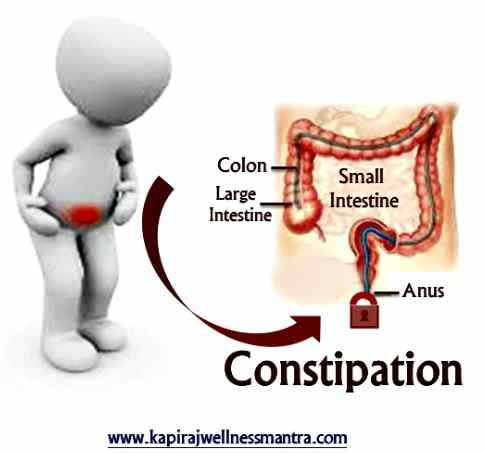 For constipation associated with an allergy to cow's milk protein, therapeutic mixtures are prescribed if the child is bottle-fed. If the child is breastfed, cow's milk and products based on it are completely excluded from the mother's diet.
For constipation associated with an allergy to cow's milk protein, therapeutic mixtures are prescribed if the child is bottle-fed. If the child is breastfed, cow's milk and products based on it are completely excluded from the mother's diet.
After the introduction of “thick” complementary foods, boiled water is necessary for all children, regardless of the type of feeding.
For older children, it is recommended to eat foods rich in vegetable fibers. It is not recommended to “smear food”, puree, “snacks”, “eating on the go”. Food should be crumbly, meat / poultry / fish - “piece”. A “bulk” breakfast is required to stimulate the “gastrocecal reflex”.
The main source of coarse-fiber vegetable fiber, containing a large amount of dietary fiber, is cereal bran, rye bread, as well as a number of vegetables and fruits. According to the principles of evidence-based medicine, a statistically significant increase in stool frequency and improvement in its consistency was demonstrated with the use of fiber compared with placebo.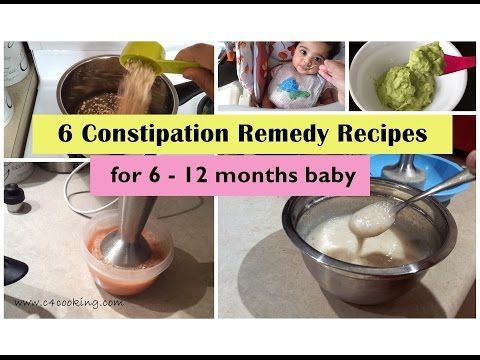
Bran, as the main source of vegetable fiber, is recommended to be added to the second and third courses, after pouring boiling water over it and settling for 20 minutes. Bran can also be used in between meals, drinking plenty of fluids. For school-age children, the total amount of fluid when taking bran should be at least 1.5-2 liters per day, otherwise they mainly act as sorbents, absorbing fluid from the intestines, thereby increasing constipation. The dose is selected individually, it is recommended to start with 1 teaspoon 2-3 times a day, with a gradual increase to 40 g per day. When the effect is achieved, the dose is reduced and limited to one dose.
The American Academy of Pediatrics (2009) recommends a fiber intake of 0.5 g/kg/day (maximum 35 g/day) for all children. Fiber intake below the minimum recommended value has been shown to be a risk factor for chronic constipation in children.
However, long-term intake of a large amount of plant fibers due to fermentation by intestinal microflora is naturally accompanied by bloating and flatulence.
Children with constipation are shown to take cool liquids on an empty stomach (drinking and mineral water, juice, compotes, kvass), to enhance the laxative effect, it is possible to add honey, xylitol or sorbitol. It is very beneficial for bowel function to increase the intake of juices containing sorbitol/sorbitol, such as juice from plums, pears, apricots, peaches and apples,
With “sluggish” bowel function (hypomotor constipation), cool mineral water of medium and high mineralization is used, such as Essentuki 17, Batalinskaya, Arzni, Donat Magnesium, etc.; with spastic constipation (hypermotor constipation, stool form more often type 1) - warm and low mineralization (Essentuki 4). Calculation of mineral water - 3-5 ml / kg per day.
It is necessary to limit milk in its pure form and in dishes, as flatulence may occur with the appearance or intensification of abdominal pain. It is better to replace whole milk with sour-milk products - kefir, acidophilus, yogurt, yogurt, etc.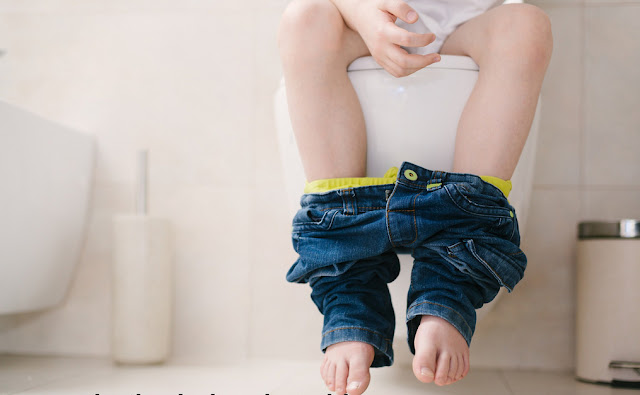
The diet of children with constipation includes dishes rich in vegetable fiber - salads from fresh vegetables, greens 2-3 times a day, baked apples, stewed vegetables, diluted vegetable and fruit juices with pulp. Food is cooked mostly unground, steamed or boiled in water.
It is preferable to take raw vegetables and fruits (in the absence of contraindications). Especially recommended are tomatoes, zucchini, pumpkin, carrots, beets, lettuce, cauliflower, apples. Dried fruits (prunes, dried apricots, figs) are given in soaked form and as part of cooked dishes. White cabbage, young green beans, green peas are allowed with good tolerance. Parsley, dill, celery are good to add to various dishes and salads.
If after reading the article you still have questions or you do not understand how to apply the recommendations in your particular case, we invite you and your child to be examined by a pediatric gastroenterologist at the DDC. For the convenience of parents, you can make an appointment with a pediatric gastroenterologist at the Children's Diagnostic Center on a weekday and on Saturdays.


